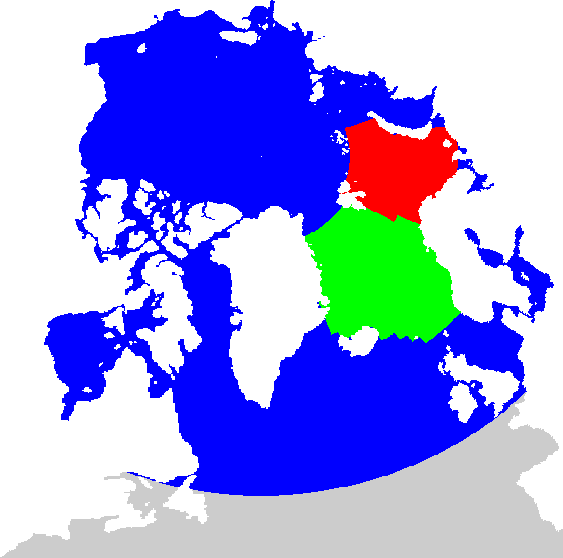Copernicus Marine Service Arctic MFC: Validation of sea surface temperature
Validation based on data from drifting buoys
Validation of the Copernicus Marine Arctic MFC results for sea surface temperature is performed using data from drifting buoys, which are compiled by the Copernicus Marine SST TAC. New sets of buoy data are available weekly. The buoy data are available with a temporal resolution of 3 hours. These data are converted to daily mean values to conform with the TOPAZ model results. Note that the analysis is not restricted to night-time data.
Bias is defined as spatial averages of model values - observed values.
Buoy data are available from CERSAT-IFREMER in collaboration with Coriolis.
Validation based on data from satellites
Validation of the Copernicus Marine Arctic MFC results for sea surface temperature was initially performed using AATSR data from the Envisat satellite. However, communication with Envisat was discontinued on April 8. 2012. No AATSR-data is available after this date. (See information on theEnvisat mission and history).
Late in May 2013 the project decided to use data from the AVHRR instrument (which flies on the Metop-A satellite) as a replacement for AATSR data. We have post-processed the validation using AVHRR data for all 2013 bulletins.
AVHRR data from Metop-A was stopped Feb. 23. 2016, after this date the data source is AVHRR from the Metop-B satellite.
Anomaly correlations are computed using a monthly climatology as reference. The climatology was set to the monthly averages of the OSTIA product (Copernicus Marine product SST_GLO_SST_L4_REP_OBSERVATIONS_010_011), from the period 1985-2007.
AVHRR Metop-B satellite data are available from IFREMER-Coriolis who operates the Copernicus Marine SST TAC.
AATSR period:
| January 2012
01-04 01-11 01-18 01-25 |
February 2012
02-01 02-08 02-15 02-22 02-29 |
March 2012
03-07 03-14 03-21 03-28 |
April 2012
04-04 04-11 |
| December 2011
12-28 |
AVHRR period:
Regions
The ocean circulation model used in Copernicus Marine Arctic MFC covers the Arctic Ocean, the North Atlantic Ocean and adjacent ocean regions. The northern part is depicted in the figure below. Validation of sea surface temperature from model results is performed for three domains:
- an extended domain indicated by the blue, green and red regions in the figure
- the Nordic Seas, shown as the green region
- the Barents Sea, depicted in red

ARC-MFC PHYS (TOPAZ)
The model results are produced with the TOPAZ ocean data assimilation model system. Presently, TOPAZ is run weekly with data assimillation one week prior to the bulletin date, followed by a one-week 100 member ensemble simulation ending on the bulletin date, and finally a 10 day deterministic forecast. TOPAZ was developed and is maintained by the Nansen Center.
For the validation of sea surface temperature, model results for ocean temperature at the 5 meter level are used.
ARC-MFC PHYS (TOPAZ) results are available as Copernicus Marine product ARCTIC_ANALYSIS_FORECAST_PHYS_002_001_a. An archive of historical forecasts are available from a thredds server.